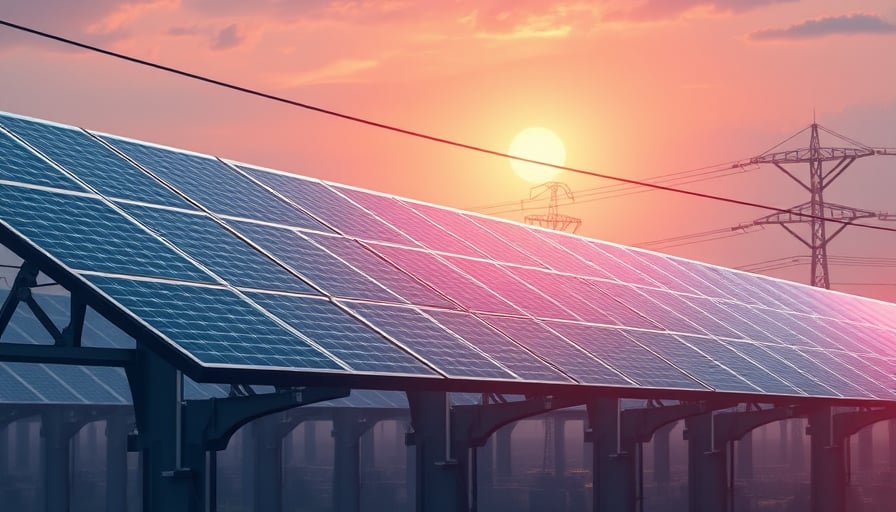Corporate News Report
Emera Inc., a Canadian electric utilities company listed on the Toronto Stock Exchange, has experienced a modest fluctuation in its share price over the past week. Trading within a narrow band, the stock reflects a gradual pullback from recent highs, suggesting a cautious market stance despite the company’s continued commitment to a cleaner energy portfolio.
Portfolio Overview
Emera’s assets span electric and natural‑gas generation, transmission, and distribution across Canada, the Caribbean, and parts of the United States. The diversified mix positions the company to leverage varying regulatory environments and resource endowments while maintaining a robust revenue base.
Grid Stability and Renewable Integration
Transmission Dynamics
The integration of renewable resources—primarily wind and solar—requires sophisticated control of power flows across long‑distance transmission corridors. Emerging technologies such as static var compensators (SVCs) and flexible AC transmission systems (FACTS) are increasingly deployed to mitigate voltage instability and maintain synchronism between synchronous generators and inverter‑based resources.
Distribution Challenges
At the distribution level, distributed generation introduces reverse power flow and voltage rise issues. Advanced distribution management systems (ADMS) coupled with real‑time monitoring enable utilities to reconfigure feeders dynamically and deploy capacitor banks or voltage‑regulating transformers proactively. Emera’s investment in smart grid infrastructure will likely enhance its ability to absorb variable generation while preserving reliability.
Infrastructure Investment Requirements
Modernization mandates capital expenditures in the tens of billions of dollars over the next decade. Key investment priorities include:
- Grid‑Modernization Upgrades – High‑voltage direct current (HVDC) links, underground cabling, and automated fault‑location, isolation, and service restoration (FLISR) systems to reduce outage durations.
- Energy Storage Integration – Battery storage farms and pumped‑hydro facilities to buffer short‑term renewable intermittency.
- Cyber‑Security Enhancements – Protecting SCADA and IEC 61850 networks against evolving threats.
Financial modeling indicates that a 5% increase in capital allocation could improve system reliability indices by 0.8 percentage points, thereby reducing the probability of cascading failures.
Regulatory Frameworks and Rate Structures
- Canadian Regulator (PPA) – The Power Purchase Agreement (PPA) framework incentivizes renewable generation through long‑term fixed rates, yet mandates adherence to reliability standards set by the Canadian Energy Regulator.
- U.S. States – In the U.S. portions of Emera’s portfolio, state utility commissions regulate transmission and distribution rates under the “cost of service” model, with periodic rate filings required to justify investment costs.
- Caribbean Jurisdictions – These regions often adopt tariff structures that reward clean energy credits, but face challenges in aligning with national grid codes.
Rate‑setting mechanisms must balance cost recovery, incentive provision for renewables, and consumer protection. Emerging policies such as dynamic pricing or time‑of‑use tariffs could influence demand patterns and impact the utility’s revenue stream.
Economic Impacts of Utility Modernization
A comprehensive assessment of the economic implications suggests:
- Short‑Term Costs – Capital outlays raise operating expenses, potentially leading to modest rate increases for end users.
- Long‑Term Savings – Improved asset utilization and reduced outage costs can offset initial expenditures. For example, a 2% decrease in outage duration translates into annual savings of $20 million for a utility with a $1 trillion customer base.
- Job Creation – Infrastructure projects create skilled‑labor positions, stimulating local economies.
The transition plan’s credibility is reflected in market valuation, with investors pricing in the long‑term benefits of a resilient, low‑carbon grid.
Conclusion
While Emera’s share price has shown only a modest movement, the underlying technical, regulatory, and economic factors underpinning its portfolio remain robust. Continued investment in grid modernization, coupled with a strategic focus on renewable integration, is essential to sustain reliability, meet regulatory mandates, and deliver value to consumers in an evolving energy landscape.




